How To Use A Number Rack
Rekenrek Activities
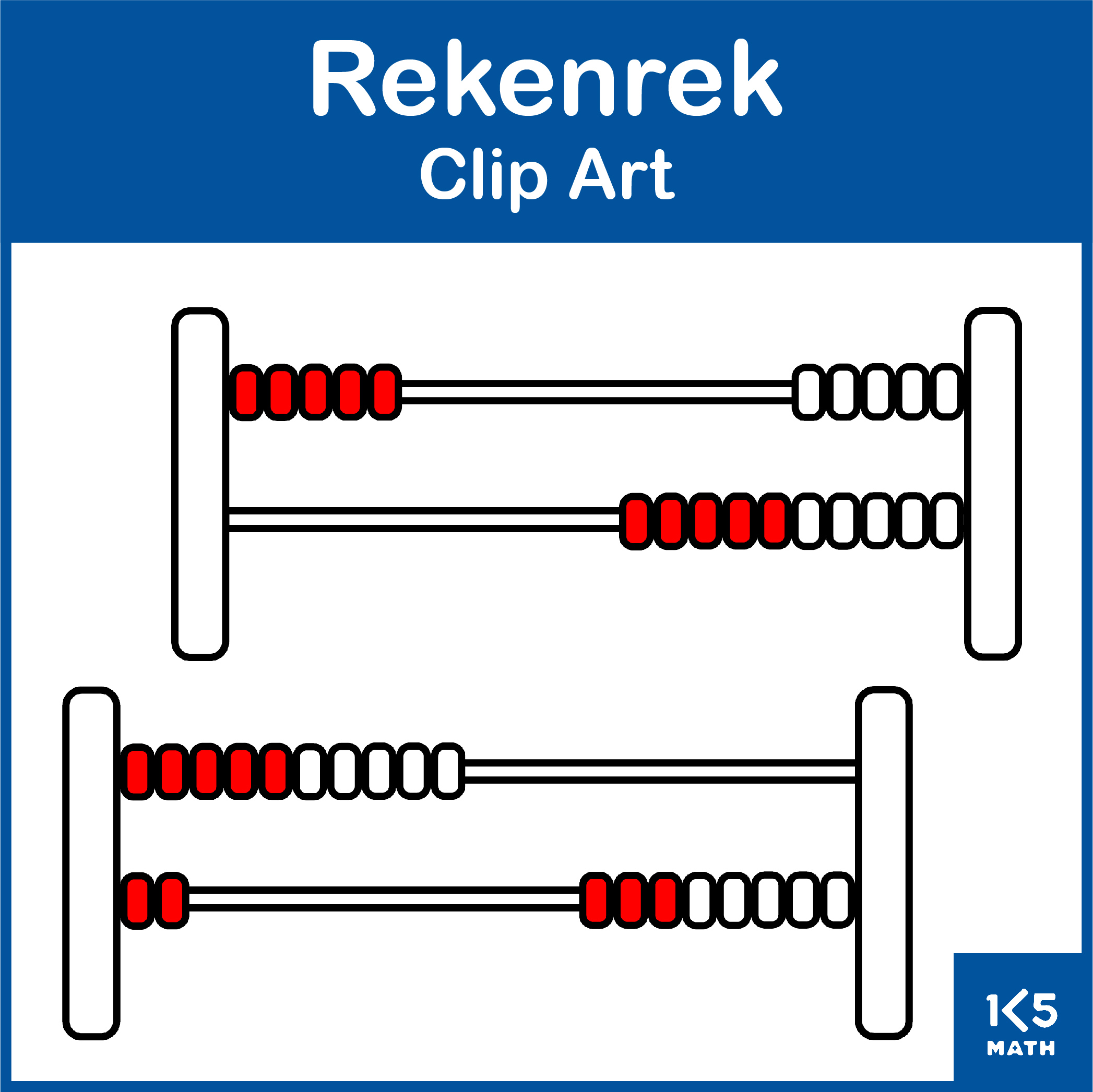
The rekenrek, or arithmetic rack, was designed by Adrian Treffers, a mathematics curriculum researcher at the Freudenthal Plant in Holland, to back up the natural development of number sense in children. Smaller versions consist of two rows of 10 chaplet. Larger versions with ten rows of ten beads are also available. Each row is made of 5 ruby-red chaplet and five white chaplet. This allows students to make mental images of numbers. Using 5 and 10 as anchors for counting, calculation and subtracting is obviously more efficient than one-by-one counting. This tool provides learners with the visual models they need to notice number relationships and develop a diversity of addition and subtraction strategies, including doubles plus or minus one, making tens, and compensation, thereby leading to automaticity of bones facts.
Possible Rekenrek Activities
- Meet the Rekenrek: Begin by asking children what they notice about the rekenrek. Then introduce the 'start position'(all beads over to the far right) and accept them practice sliding beads in groups rather than one by one "Put your chaplet in start position. Now, without touching the beads, count the showtime three chaplet in your mind. On the count of three, slide all three beads at once across the string. One… two…iii!" Repeat with other numbers.
- Testify me 0-x: Say a number, or concur up a numeral menu (0-10). Ask students to testify the given number by moving the chaplet with one push.
- Prove me 11-20: As above just ask students to show the given number of beads using just two pushes.
- Quick Images: Push some beads across and display them briefly before covering them with a piece of cloth or card. Inquire, "How many beads did you see? How do you know?" Asking children to draw or write what they saw on a dry erase board ensures that everyone is actively involved and serves as a quick assessment. If using a 100 bead rack gradually add rows until you are displaying quick images to 100. This can be extended by asking students to show the number that is one more/one less/ten more/ten less than/double the number flashed.
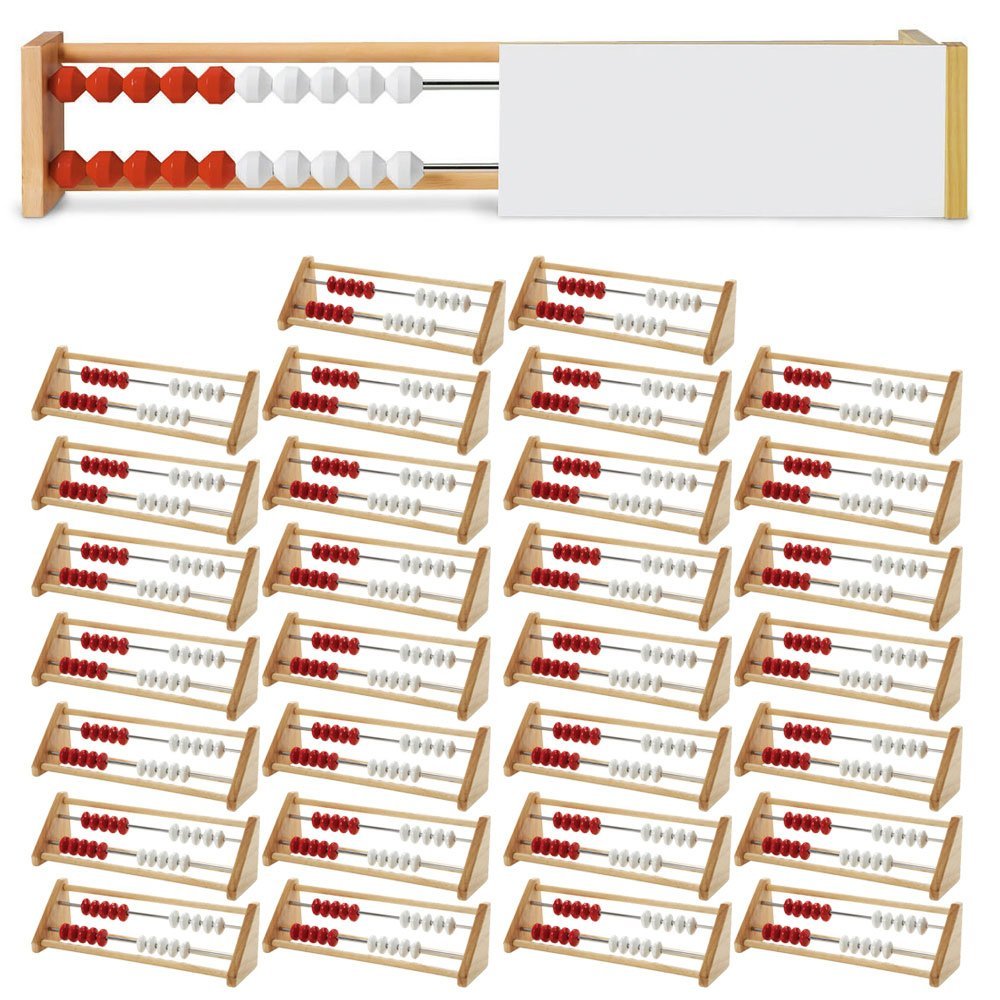
![]()

- Building Missing Addends: Ask a student to exist your partner. Tell the class that you and your partner are going to build the number half-dozen as a team. You will movement beads on the peak row and your partner will movement beads on the bottom row. "I am going to slide four beads to the left on the top row. Now in one move, y'all slide chaplet on the lesser row to build the number 6." Pair students up and take them turn over the top carte in a stack of numeral cards and work with their partner to build that number in as many unlike means equally possible. Begin with cards 1-ten, afterward increase to i-20. An arithmetic rack with ten rows tin exist used with students who are ready to correspond numbers larger than twenty.
- Finding Different Ways to Brand a Given Number:Initially use only the top row of beads. Cover the lesser row with a folded sheet of card or piece of fabric. Begin by sliding the red beads to the left and the white chaplet to the right on the top row of the rekenrek. Choose a number to build. "Let'south see how many ways we can build 6 past sliding chaplet from each side to the center. What if I slide 4 crimson beads from the left and two white beads from the right. Does that make vi beads? Can you call back of another way to brand 6? Record the different ways half dozen can be congenital. This activity should be repeated many times using unlike numbers from one-10. Once children are confident using the acme row, combinations can be found using both the top and lesser rows. Children can record the dissimilar ways they find to build the given number.
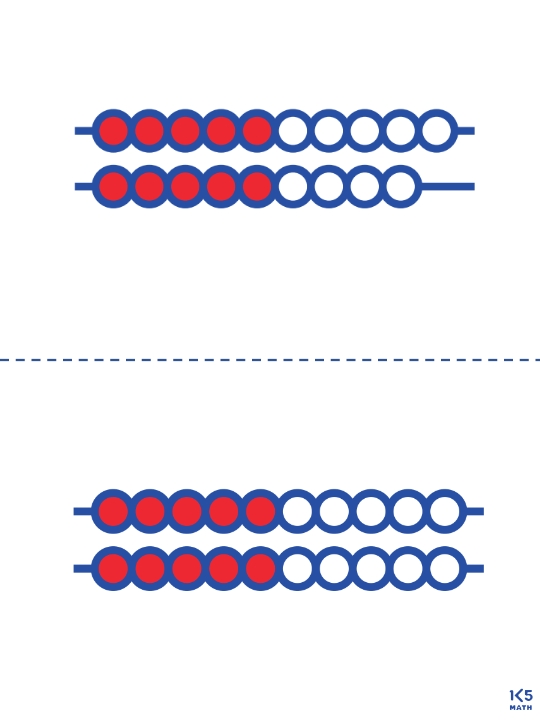
Click on the blue text beneath to download prompt cards and flashcards to utilise during mental math sessions. Impress on cardstock and identify on a band for teacher reference or place in a math centre for children to use when working with a partner.
a) Prompt Cards
b) Rekenrek Cards (1 - 20) c) Rekenrek Cards (doubles) d) Rekenrek Cards (near doubles) Interested in using rekenreks in your class but don't have the upkeep to purchase a course set? Come across our instructions on how to make a class fix for only a fraction of the toll of shop bought models.
Possible Math Journal Tasks:
- Show 5: How many different ways can you prove five on your rekenrek? (echo with different numbers)
- Doubles:How many dissimilar doubles facts tin can you testify on your rekenrek? Tape.
- Nigh Doubles: How many different 'near doubles' tin can you evidence? Tape.
- Turn Around Facts:Prove an add-on fact. What would the plough effectually fact look similar? Echo.

![]()

- Number Stories: Have children use individual arithmetic racks equally a tool to solve various types of addition and subtraction number stories. This may be used as a journal or oral activity, with the focus on children explaining their strategy for solving the problem. Be certain to include open-ended problems that have more than one solution that children can model on the arithmetic rack, such as the following:
There were 8 children on a bunk bed. Some were on the top bunk and some were on the bottom bunk. How many children were on the top bunk? How many children were on the bottom bunk? Show as many different solutions every bit you can.
At that place were 12 passengers on a double-decker coach. Some passengers were on the top deck and some were on the bottom deck. How many passengers were on the height deck? How many passengers were on the bottom deck? Show as many unlike solutions as you tin can.
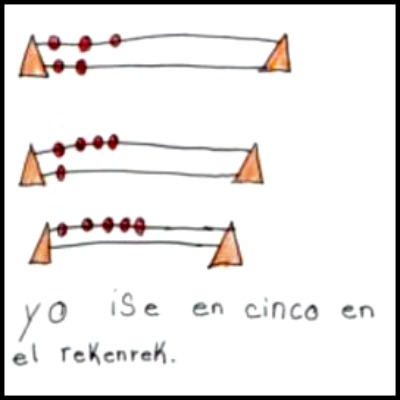
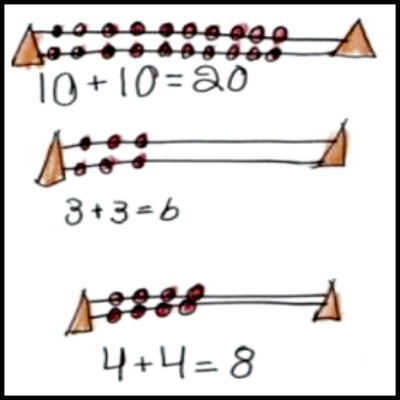
The above two work samples were completed by a Kindergarten student who represented her work very clearly on the unlined pages in her Math Journal using pictures, numbers and words. To brainstorm with some Kindergarten students may find it difficult to correspond their work on paper. Having recording paper available for children who cull to use it is 1 way to scaffold early attempts at drawing.
Amazon Associates Disclosure
K-5mathteachingresources.com is a participant in the Amazon Services LLC Associates Program, an chapter advertising program designed to provide a means for sites to earn advertising fees by advertizing and linking to Amazon.com
How To Use A Number Rack,
Source: https://www.k-5mathteachingresources.com/Rekenrek.html
Posted by: goodnightmeaust.blogspot.com


0 Response to "How To Use A Number Rack"
Post a Comment